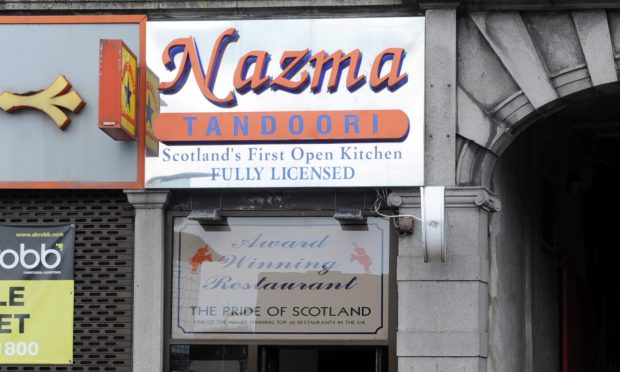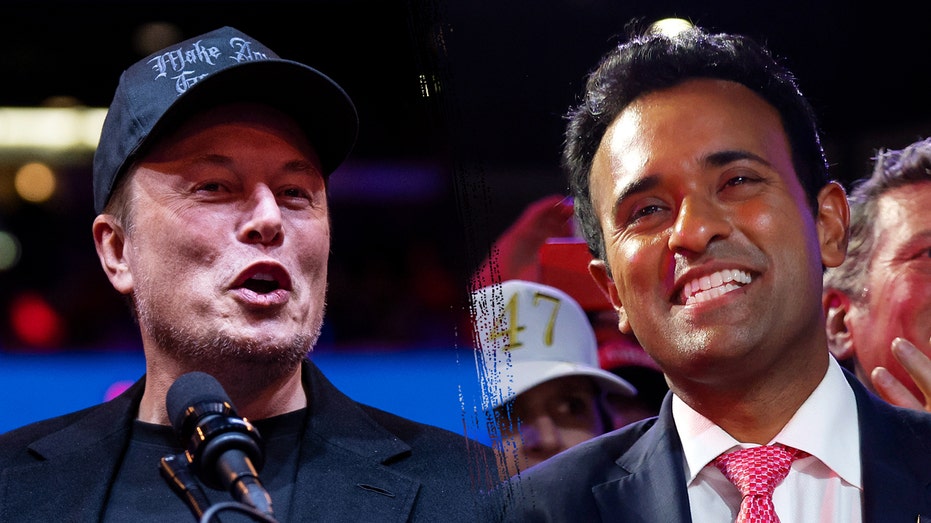
Illinois has been flyover territory for the nation’s presidential candidates, its preference for Democrats assured since 1992 when it chose Bill Clinton over George H.W. Bush, who had won the state and the election four years earlier.
But some of the themes Vice President Kamala Harris and former President Donald Trump have emphasized heading into Tuesday’s election are being echoed in campaigns throughout Illinois’ down ballot contests. While local issues do surface, they are often drowned out by the outsized attention of the race for the White House, with local candidates following the lead of their top ballot contenders — another sign of the increased nationalization and polarization of the country’s politics. “Did the nationalization of politics cause the divide? Or did the divide cause the nationalization of politics?” asked Robin Johnson, a political strategist and political science professor at Monmouth College in far western Illinois.
“I think one of the negative trends of our politics is that just everything is nationalized. And, the negative partisanship,” he said. “It’s, ‘I may not like my candidate, but I hate yours’ more.
’” With no statewide races other than the presidency up for election, local contests make up the bulk of the Illinois ballot. Voters will cast their choices for all 17 congressional seats , all 118 Illinois House seats and 24 of the 59 Illinois Senate seats. There are also several county offices up for election and, for the first time, an election for the Chicago Board of Education in which 10 members of what will eventually be a 21-member board will be elected.
There are a host of hyperlocal issues in those contests, yet frequent campaign refrains have included crime, immigration, transgenderism and the economy, all of which echo Republican national talking points. For their part, Democrats are using both Trump’s unpopular persona in Illinois and the Trump-led GOP’s curbs on abortion rights as motivators. “We know what the extremists are capable of and they’re taking root in Illinois.
Marty McLaughlin wants to ban abortion in Illinois with no exceptions for rape and incest,” a narrator says in a TV ad being aired by Democratic challenger Maria Peterson against the two-term Republican incumbent state representative from Barrington Hills. “We can’t ignore the warning signs. Stop Marty McLaughlin before it’s too late.
” The ad is airing in the expensive Chicago TV market, one example of the significant fundraising advantage held by Democrats who control all statewide offices and have supermajorities in both legislative chambers. It’s also an example of how Democrats think abortion rights remains a powerful inducement for driving turnout, particularly among women. That was the case in the 2022 election, held only months after the conservative majority on the U.
S. Supreme Court, led by three Trump appointees, reversed the landmark Roe v. Wade ruling that returned the issue of legalized abortion to the individual states.
So intent are Democrats on driving the abortion message in legislative races that state Rep. Tony McCombie of Savanna, the Republican leader of the Illinois House, issued a statement decrying the opposition party for focusing on “the narrow confines of abortion” when it comes to women. “To reduce women’s concerns to a single talking point demeans every woman in this state,” McCombie said, accusing Democrats of “consistently” injecting abortion “into the political arena to score points.
” “Illinois already has some of the most expansive abortion laws in the country,” she said. “Like it or not, it’s the law and this election cycle will not change that. Here’s the truth: abortion access is not under threat in Illinois.
” But McCombie’s statement belies the fact that it has been Republicans under Trump who have pushed to curb abortion rights and it was Democrats who enshrined a right to abortion in state law . No current GOP member of the legislature supports abortion rights and a federal ban on the procedure could nullify Illinois law. Kent Redfield, professor emeritus of political science at the University of Illinois Springfield, said McCombie’s argument might be a valid one to make in the General Assembly if it was about thoughtful conversation on the issue, rather than trying to score political points against Democrats in a legislature where Republicans border on irrelevancy.
“But you can’t make that case in the position that the Republicans are in in Illinois,” Redfield said. “It’s very ineffective in terms of a campaign.” Republicans are attempting to bring their party’s own national issues to the fore.
McCombie earlier this month announced along with her House GOP colleagues the filing of legislation that would require proof of U.S. citizenship to register to vote.
The measure was a way to highlight the GOP’s focus this campaign season on immigration and securing the southern U.S. border, a key Trump talking point in his bid to win the presidency.
Trump, however, has repeatedly lied in trying to score political points on the issue by saying “Democrats are registering Illegal Voters by the TENS OF THOUSANDS, as we speak,” a falsehood he’s used in fundraising emails to supporters as recently as Oct. 24. Illinois state election officials say voting fraud is rare and national studies have found voting by noncitizens to have occurred in very limited circumstances and not in the massive numbers Trump has alleged.
Notably, McCombie’s legislation would have no effect on Tuesday’s election since it couldn’t even be considered by lawmakers until the General Assembly convenes for its fall session on Nov. 12. And if it were true that large numbers of noncitizens had been registered to vote, they would stay on the rolls under McCombie’s bill since proof of citizenship would only be required for future voter registrations.
Despite Trump’s unpopularity in the state’s most populous areas — he lost Illinois by 17 percentage points in both 2016 and 2020 — the state GOP is actively linking itself to the former president. “President Trump asked us to reach out urgently with an important message: the ONLY way to win is to SWAMP THEM with VOTES,” the state GOP told supporters in a late October email. “President Trump was just in Chicago taking on the liberal establishment on their own turf! He’s not afraid to back down and we can’t be afraid to back down either.
” National politics have even seeped into what should be the most local of races — the 10 seats in play for the newly constituted Chicago Board of Education. Mostly in mailers that have barraged residents’ homes across parts of Chicago, candidates and their supporters have traded accusations about who is the more loyal Democrat. But the political arm of the Chicago Teachers Union has amped up the attacks, labeling challengers to the union’s endorsed candidates as puppets of Trump, showing an image of a marionette doll and stating the candidate would “dance to Donald Trump’s Project 2025 agenda.
” Project 2025 is a wish list and planning document for a Trump second term that was created by the conservative Heritage Foundation think tank. Among its proposals, Project 2025 calls for drastic cuts in social services, the elimination of the U.S.
Department of Education and federal poverty grants to schools while creating a federal voucher program to help fund private education. Democrats have universally condemned Project 2025 and Trump has sought to put distance between himself and the report, even though more than 100 of his former staffers helped put it together Looking at Illinois’ congressional and legislative contests, Redfield said the gerrymandered districts drawn by Democrats to give them an edge also contribute to partisan polarization as national issues take center stage in those races. The effect of the Democratic mapmaking handiwork is most evident in the congressional district map, which solidified Democratic-leaning districts and left the delegation with a 14-3 advantage over Republicans.
The daunting challenge the map presents to Republicans may have played a role in Niki Conforti’s plans for election night. Ten days before the polls closed, the GOP challenger to three-term Democratic U.S.
Rep. Sean Casten of Downers Grove issued a statement that sounded more like a wake than a plan for a victory celebration. The campaign told the media it was holding a “private team event” at a Countryside sports bar and asked reporters to “respect our privacy.
” Another contributing factor to the nationalization of local politics is that there are multiple and diverse communities contained within the sprawling congressional and legislative districts outside of Chicago. That makes it easier for candidates to campaign on larger national issues than be asked to address specific community problems, Redfield said. “One of the things that makes these campaigns national in interest is there’s no coherence to the district and there are not necessarily communities having a common interest,” Redfield said.
“Campaigns used to be, ‘You know me. I’m one of you, and I understand you, and you know you can trust me because you’ve known me from high school and my family and all of those kinds of things,’” he said. “It’s much more difficult for the voters to think of somebody as ‘one of us,’ and it’s much more difficult for the candidate to make their case that they’re one of us when you’re not having these communities of interest.
Instead voters look at Rs and Ds and it’s a partisan decision in the end.” An increase in those partisan decisions can be seen in the decline of ticket splitting, or voting for candidates from different parties. Republicans sought to encourage ticket splitting in 1997 when they banned one-punch straight-party voting during their brief two-year control of the legislature and governor’s office.
The move was seen as revenge against Democrats who had heavily promoted straight-party voting to retake control of the Illinois House. Casey Burgat, director of the legislative affairs program at the Graduate School of Political Management at George Washington University, noted in a recent podcast that ticket splitters have become increasingly rare. In the 1972 presidential election, there were 190 U.
S. House members elected from districts that voted for the opposite party’s candidate for the White House. That fell to 35 in 2016 and in 2020 less than 4% of the House was elected from districts that went the other way for president — just 16 seats.
“The trend is suggesting in 2024, we may even set a new record” for low numbers of ticket splitting, Burgat said. Redfield also cites the diffusion of media as another factor for national political themes being used in local contests. “You’re not getting your information from the newspaper and the 6 o’clock news.
If you’re getting information, it’s coming from social media and podcasts” that tell people what they want to hear, providing them with “confirmation bias” on their opinions, Redfield said. Added to that: “Campaigns that are smart enough to find you and go after that particular thing that is going to be your red meat issue,” Redfield said. And then, “You say, ‘Well, I’m done preparing for the election,’” he said.
Get Government & Politics updates in your inbox! Stay up-to-date on the latest in local and national government and political topics with our newsletter..














